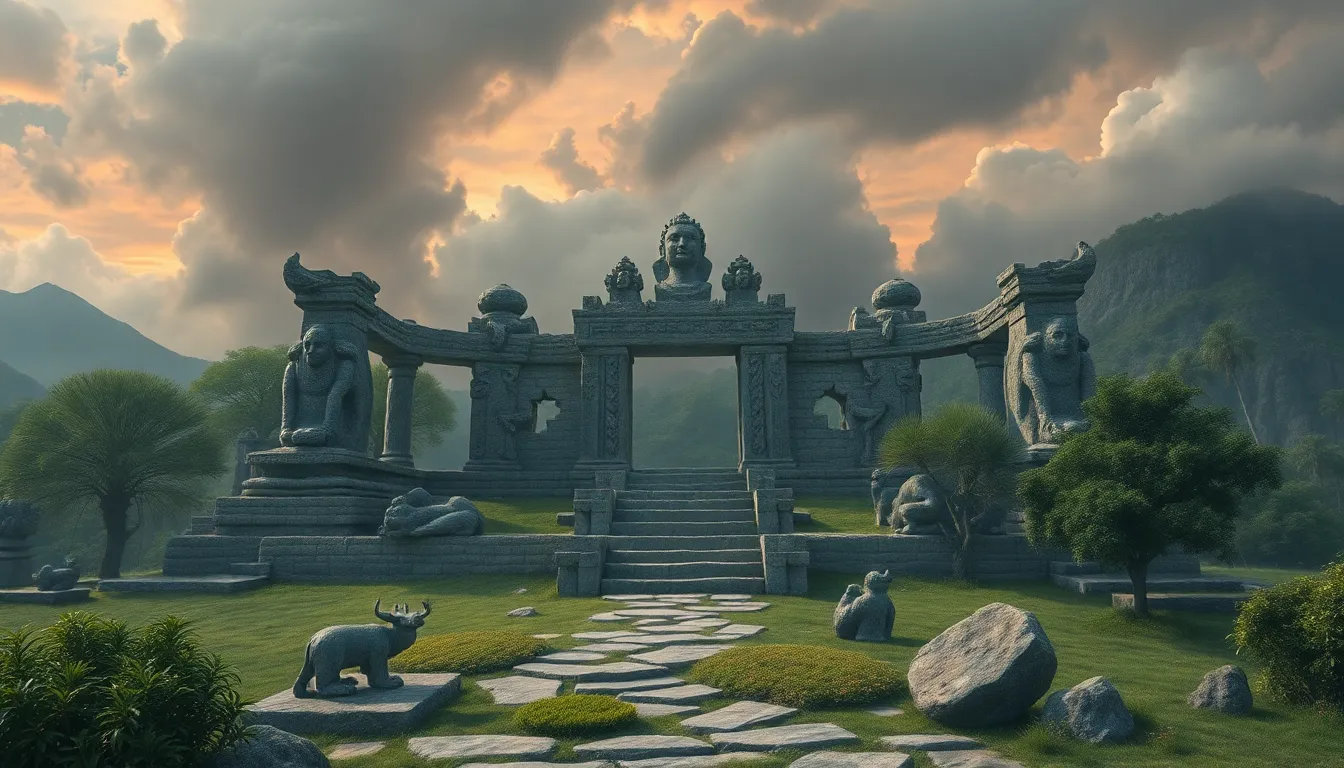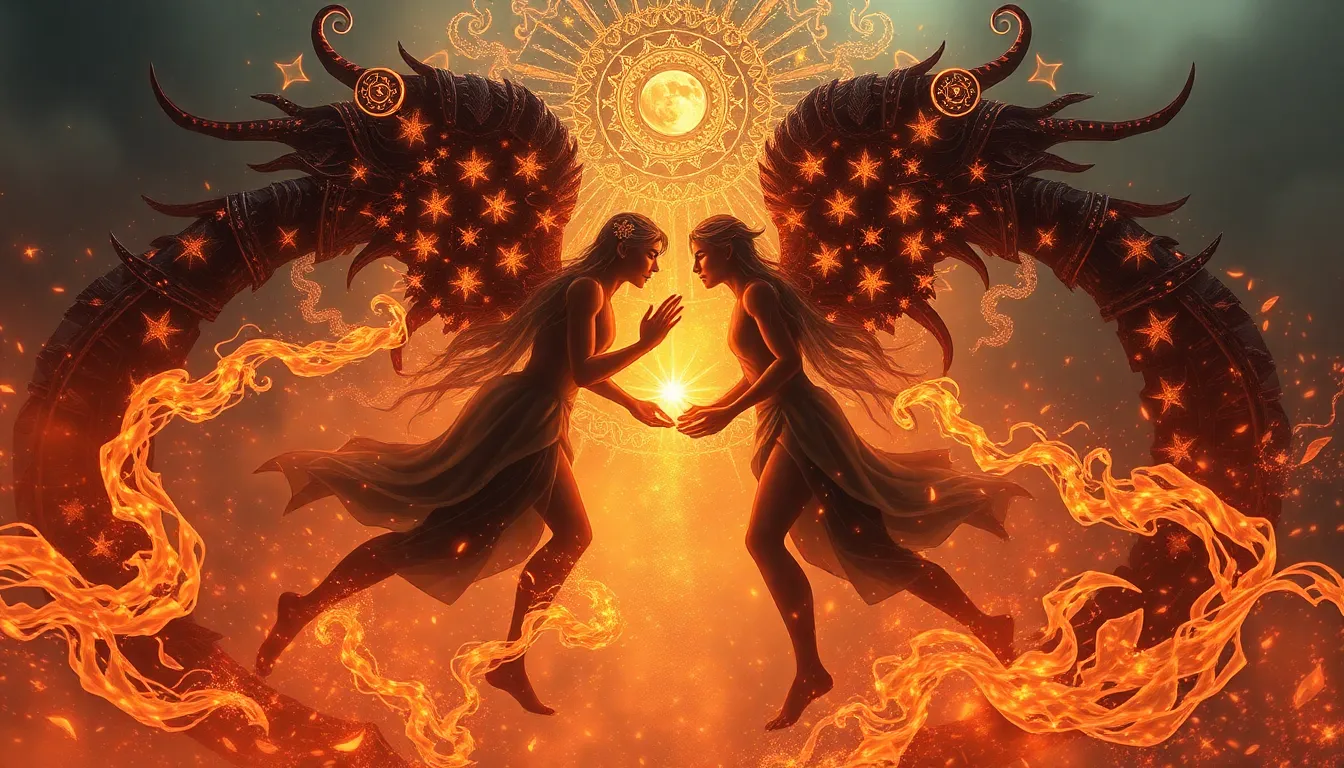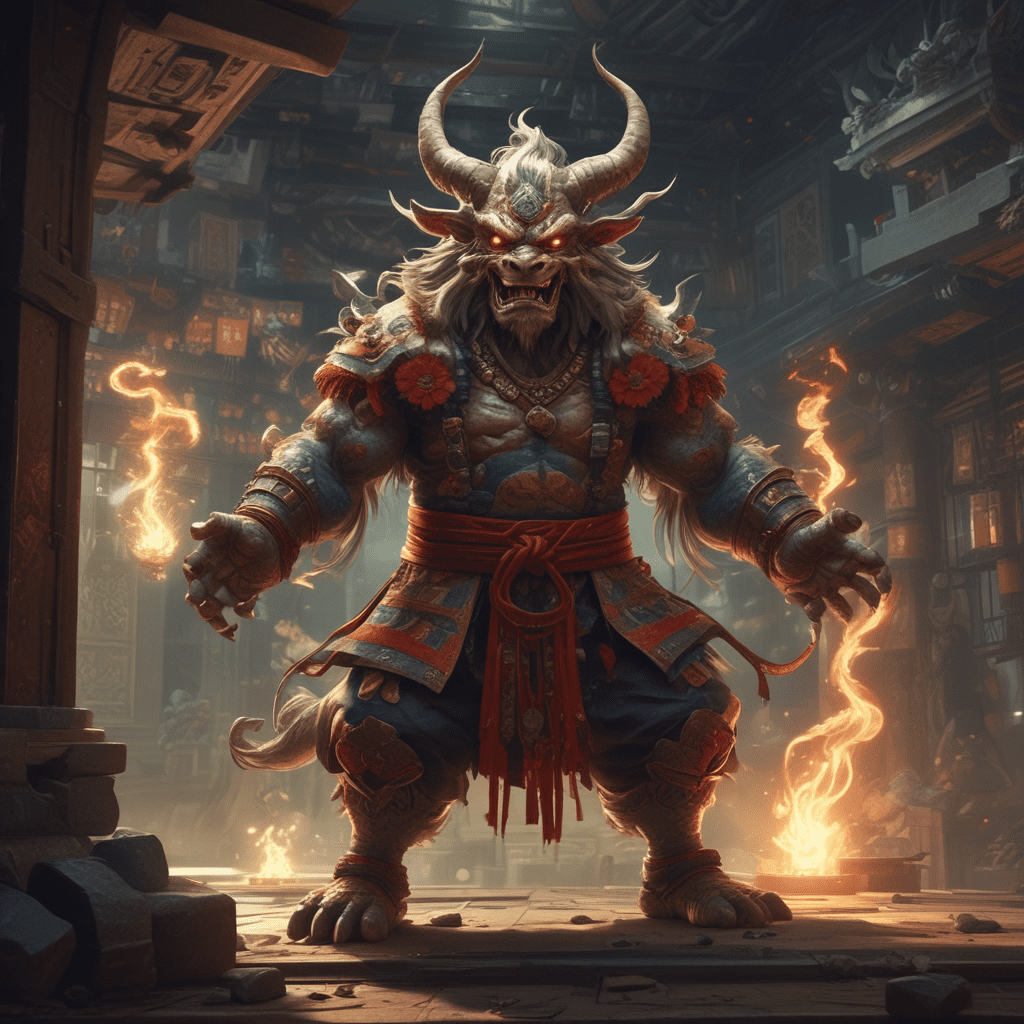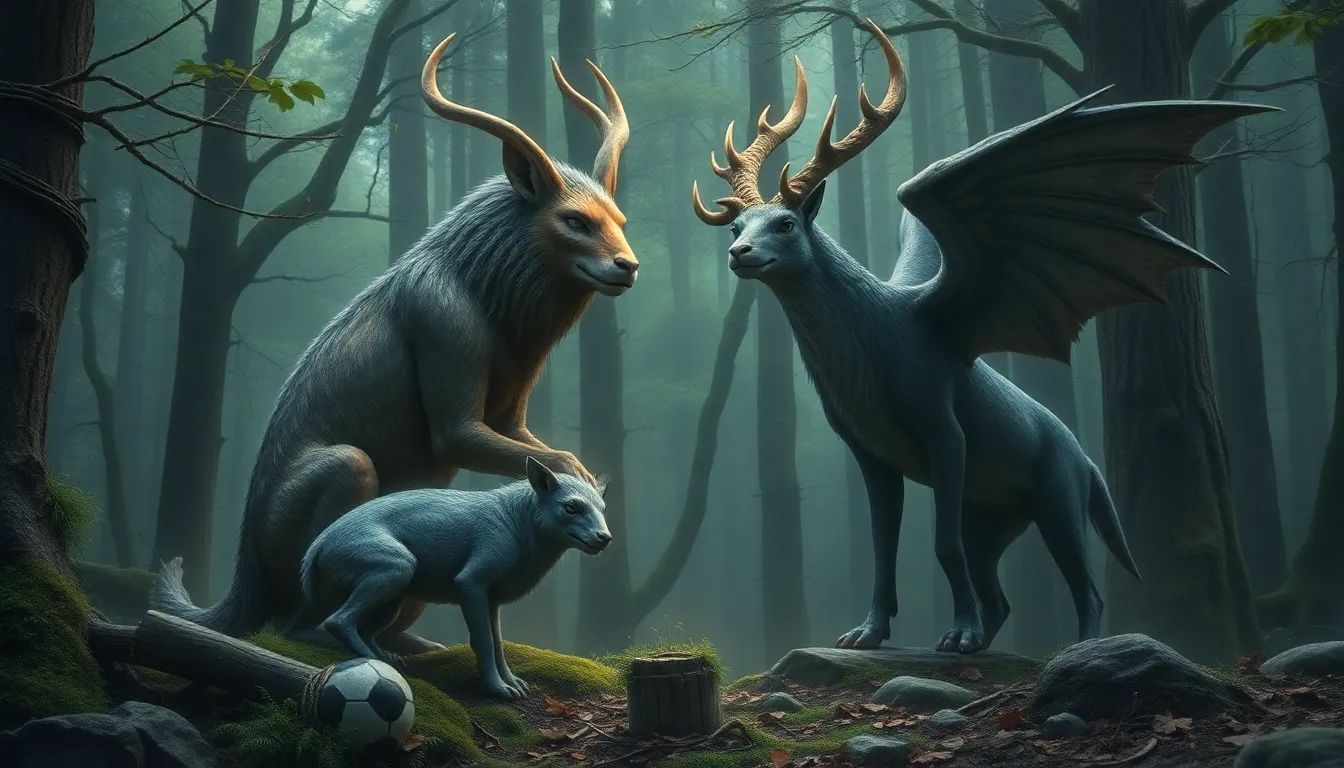Ancient Deities and Their Connection to the Natural World: Myths Explored
I. Introduction
Throughout history, ancient civilizations have created a rich tapestry of myths and legends that reflect their understanding of the natural world. These stories often personified natural elements as deities, establishing a profound connection between humanity and nature. The exploration of these ancient deities offers insights into how cultures interpreted their environment and the forces that governed it.
This article aims to delve into the role of mythology in ancient civilizations, examining the significance of various deities connected to earth, water, sky, and animals. By analyzing case studies and the rituals associated with these myths, we can better comprehend the human-nature relationship that has evolved over centuries.
II. The Role of Mythology in Ancient Civilizations
A. Definition and significance of mythology
Mythology can be defined as a collection of myths that a particular culture uses to explain its beliefs, practices, and understanding of the world. It serves several significant functions:
- Explaining natural phenomena
- Providing moral and ethical guidance
- Offering a framework for understanding the cosmos
B. How myths served as explanations for natural phenomena
In ancient times, people lacked the scientific knowledge to explain natural occurrences such as thunderstorms, floods, and the changing seasons. Myths filled this gap, attributing these events to the actions of gods and goddesses. For instance, a thunderstorm might be seen as the anger of a sky deity, while a bountiful harvest might be attributed to the favor of a fertility goddess.
C. The cultural context of ancient myths
Each civilization’s mythology is deeply rooted in its cultural context, shaped by geographic, social, and economic factors. The deities worshipped often mirrored the environment and lifestyle of the people, reflecting their values and priorities.
III. Deities of Earth and Fertility
A. Overview of earth and fertility deities across cultures
Earth and fertility deities are among the most prominent in ancient mythology, symbolizing the life-giving and sustaining aspects of the natural world. These deities are often associated with agriculture, harvests, and the nurturing qualities of earth.
B. Case Study: Demeter and Persephone in Greek mythology
In Greek mythology, Demeter is the goddess of the harvest and agriculture, while her daughter Persephone represents the cycle of life and death through her seasonal descent into the underworld. Their story explains the changing seasons: when Persephone is with Demeter, the earth flourishes; when she is in the underworld, the earth becomes barren.
C. Case Study: Gaia and her connection to the earth
Gaia, the personification of the Earth in Greek mythology, is considered the mother of all life. She symbolizes the nurturing aspect of nature, embodying fertility and the interconnectedness of all living things. Gaia’s myths emphasize the importance of respecting and honoring the earth as a source of life.
IV. Water Deities and Their Symbolism
A. The significance of water in ancient beliefs
Water is a vital element for life and has been revered in many cultures as a powerful and transformative force. Water deities often symbolize fertility, purification, and chaos, reflecting the dual nature of water as both a giver and taker of life.
B. Case Study: Poseidon and his dominion over seas
In Greek mythology, Poseidon is the god of the sea, earthquakes, and horses. His temperament reflects the unpredictability of the ocean, and sailors would offer sacrifices to gain his favor and ensure safe passage. Poseidon’s influence highlights the importance of the sea in ancient maritime cultures.
C. Case Study: Yemaya in African and Afro-Caribbean traditions
Yemaya is a goddess of the sea revered in various African and Afro-Caribbean traditions. She represents motherhood and fertility, often associated with the nurturing aspects of water. Rituals dedicated to Yemaya seek her blessings for fertility, healing, and protection, illustrating the deep connection between water and life.
V. Sky and Storm Deities: Representations of Power
A. The connection between weather and divine figures
Sky and storm deities often embody the raw power of nature, commanding respect and fear. These deities are typically associated with thunder, lightning, and storms, representing both destruction and renewal.
B. Case Study: Zeus and his control over thunder and lightning
Zeus, the chief god in Greek mythology, wields thunderbolts and is often associated with the sky, law, and order. His ability to control the weather reflects the importance of rain and storms in agricultural societies, where favorable weather could mean the difference between abundance and famine.
C. Case Study: Thor and the representation of storms in Norse mythology
In Norse mythology, Thor is the god of thunder and storms, known for his strength and protection of humanity. He wields a mighty hammer that creates thunder and lightning. Thor represents the warrior spirit and the idea of nature’s unpredictability, embodying the fierce and protective aspects of the natural world.
VI. Animal Deities and Their Role in Nature
A. Importance of animals in ancient mythologies
Animals have played a crucial role in ancient mythologies, often representing specific qualities or characteristics that societies revered or feared. Animal deities symbolize the interconnectedness of all life forms and the importance of respecting the natural world.
B. Case Study: Anubis and the significance of jackals in Egyptian belief
Anubis, the jackal-headed god of the afterlife in Egyptian mythology, symbolizes protection and guidance for the dead. The jackal’s association with burial sites reflects the ancient Egyptians’ reverence for death and the afterlife, emphasizing the importance of animals in their spiritual beliefs.
C. Case Study: Cernunnos and the representation of nature in Celtic myths
Cernunnos, a horned god in Celtic mythology, is often associated with fertility, life, and the natural world. He embodies the spirit of nature and wildlife, representing the deep connection between humans and the animal kingdom. Cernunnos highlights the sacredness of nature in Celtic beliefs.
VII. Myths Explaining Natural Disasters
A. How ancient cultures interpreted natural disasters through myths
Ancient cultures often explained natural disasters through myths, attributing such events to divine displeasure or cosmic battles. These narratives served to provide meaning and context to catastrophic occurrences.
B. Case Study: The myth of Tlaloc and the rain in Aztec culture
Tlaloc, the Aztec god of rain and fertility, was believed to control storms and agricultural cycles. His favor was crucial for crops, and rituals were performed to appease him during dry spells to ensure rain and sustain life.
C. Case Study: The Greek myth of Typhon and volcanic eruptions
In Greek mythology, Typhon was a monstrous figure associated with storms and volcanic eruptions. His battle with the gods represented the struggle between chaos and order, illustrating how ancient Greeks understood and interpreted the destructive forces of nature.
VIII. Rituals and Worship: Connecting to the Natural World
A. The role of rituals in honoring deities
Rituals have been a fundamental aspect of ancient religions, serving to honor deities and connect communities to the natural world. These practices often included offerings, prayers, and seasonal celebrations that acknowledged the cycles of nature.
B. Seasonal festivals and their connection to agricultural cycles
Many ancient cultures held festivals that coincided with planting and harvest seasons, celebrating the bounty of the earth. These festivals often included communal feasting, dances, and rituals aimed at ensuring abundance for the coming year.
C. The impact of rituals on community relationships with nature
Rituals fostered a sense of community and collective identity, reinforcing the bond between people and nature. By honoring deities associated with natural elements, communities cultivated respect for their environment and recognized their dependence on its resources.
IX. The Influence of Ancient Myths on Modern Environmentalism
A. Relevance of ancient deities in contemporary environmental discussions
As modern society grapples with environmental challenges, ancient myths offer valuable perspectives on the relationship between humanity and nature. The reverence for deities associated with natural elements can inspire contemporary environmentalism.
B. How myths inspire modern conservation efforts
Environmental movements often draw upon mythological narratives to emphasize the importance of preserving the earth and its resources. The stories of deities who embody nature’s beauty and power can motivate individuals and communities to take action for conservation.
C.




